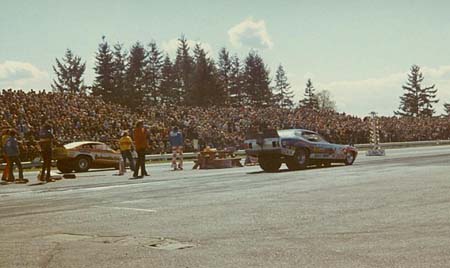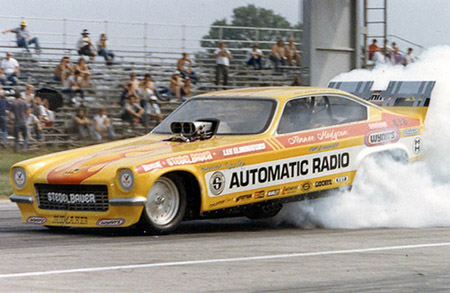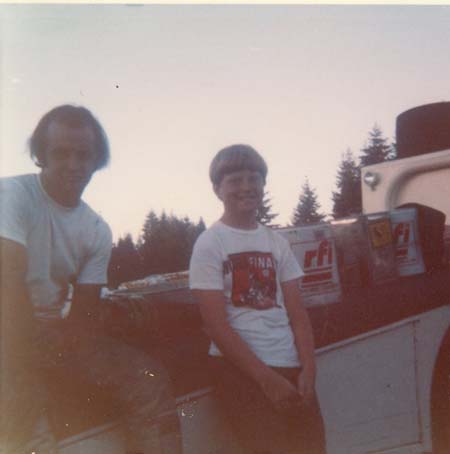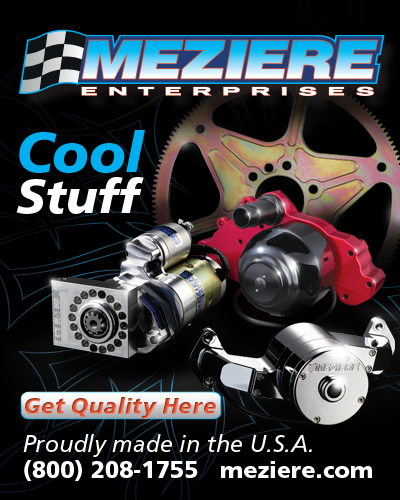JIM ROCKSTAD REMEMBERS: SEATTLE'S 64 FUNNY CARS
 Nearly 40 years ago America was going through the first of two major gasoline crises. The country was still trying to extricate itself from Vietnam and drag racing, like other forms of American motorsports was still in the toddler stage.
Nearly 40 years ago America was going through the first of two major gasoline crises. The country was still trying to extricate itself from Vietnam and drag racing, like other forms of American motorsports was still in the toddler stage.Drag strips were struggling to keep fans in the stands and something called the “funny car” was still in its infancy. But, it was 64 of those “funny cars” which would rescue tracks like Pacific Raceways.
Bill Doner, after covering a sports car event at Pacific Raceways, took over the management of the floundering facility. Doner, who had been a sports reporter for a Southern California newspaper, relocated to Kent, Washington to take on the daunting task of salvaging the floundering facility.
Part 1 - In the Beginning ...

Drag strips were struggling to keep fans in the stands and something called the “funny car” was still in its infancy. But, it was 64 of those “funny cars” which would rescue tracks like Pacific Raceways.
Bill Doner, after covering a sports car event at Pacific Raceways, took over the management of the floundering facility. Doner, who had been a sports reporter for a Southern California newspaper, relocated to Kent, Washington to take on the daunting task of salvaging the floundering facility.
Sports car racing, over the years, had met with some success but the financial picture was very bleak for the facility. Additionally, drag racing was also held
at the track but it was pretty much just hit and miss; having also met with
limited success.
Finding a direction for the future of the facility was of the utmost importance to Doner. He saw the challenge and was anxious to resolve the problems.

Major drag racing was so limited back then that creativity was in huge need. The facility existed, the market was great, but the track appeared to lack the right product – it was basic supply and demand. Doner felt he had to “give them (the fans) what they wanted”… and lots of it.
The hardest part of the equation was figuring out just exactly what the fans wanted.
Funny cars had arrived on the drag racing scene in the late 60’s and were fast becoming the most popular drag racing machines of the era. The lengthy burnouts, colorful body styles and sometimes out-of-control runs were all part of the packaged excitement of the up and coming funny car scene.
All that “ground pounding excitement” needed was somebody with flair, moxie; somebody willing to risk a lot, along with a burning desire and the skills to promote heavily. It was a perfect fit for a flamboyant guy like Doner.
It was a pairing made to order, the right guy at the right time with the right ideas. A creative carnival-type promoter is exactly what the sport of drag racing needed in those early days.

Realizing that there is “nothing in all of motor sports like funny cars at night”, Doner installed a lighting system at SIR and his first stroke of magic took place. What an incredible sight amongst the lush green Northwest background - nitro funny cars and the huge flames spewing from their headers. It was, to say the least, breathtaking.
“A sight to behold”… as Doner tells it.
The early night funny car races in Seattle were mostly local shows with just a small group of local cars.
For 1971, Doner designed and produced the Seafair Funny Car Championships, utilizing 16 nitro burners, including a few cars from outside the area. The Saturday night “under the lights” event was perfectly located on Seafair weekend with the hydro races (and a major crowd), but the hydros only ran on Sunday. Seafair activities were nearly a month long with community parades and festive activities throughout the entire Puget Sound region.
A giant back-to-back weekend was formed with the funny cars at SIR on Saturday night and the hydros on Sunday on Lake Washington … a “gear-heads” delight. Mass motor sports all jammed into one weekend.
Come for one and stay for both.
The lengthy ticketing lines began to appear at SIR for the first Seafair Funny Car Championships in August of 1971. Doner started to believe that he finally had come up with the answer on how to save his facility on a major scale. He was hard to see how this early success could lead to bigger and better things.
As Doner surmised, “Hey, if some is good more is better. Let’s go for it.”
More would be 64 Funny Cars.
Part #2 - JIM ROCKSTAD REMEMBERS: 64 FUNNY CARS -The huge line-up of funny cars at night were well received at SIR.




































